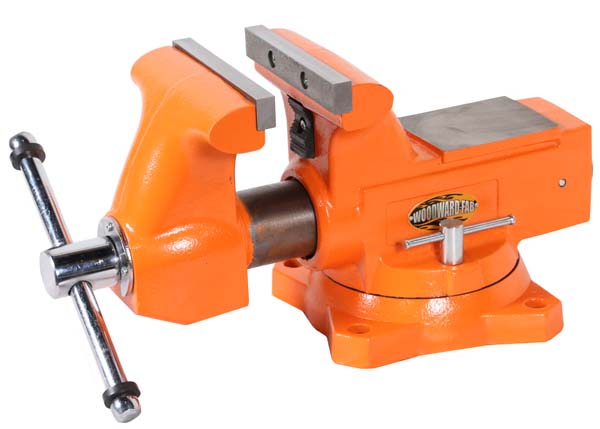A bench vise is an apparatus designed for firmly gripping the object during manufacturing. It features two parallel jaws, one fixed and another movable to lock the object between two ends. It can have different mechanisms of locking like screw-tightening, lever lock, etc. Despite its simple mechanical construction, the device is found useful in several industrial operations. Especially, the woodworking/carpentry and metalworking industries utilize bench vises in several operations. Woodward-Fab is a company that offers different types of vises. Owing to versatile vise designs, their vises are being utilized in several industrial operations. This post discusses the industrial uses of Woodward Fab vises.

A Discussion on Few Popular Applications of Woodward Fab Vises
Woodward Fab vises are today considered a must-have by several wood and metalworking facilities. The following are a few applications of Woodward Fab vises.
- Saw Cutting: Saw cutting is one of the most common tasks in a carpentry shop. It requires the wooden block to be firmly gripped for sawing. If in case the wooden block is not firmly clamped, the worker might cut himself. This is where the bench vises come into play. The bench vises can be mounted on a bench or working table and then the wooden block can be firmly locked between the claws. Any size of the wooden block can be clamped on a Woodward-Fab bench vise. Also, the tabletop can be raised to a level where the operator can work comfortably.
- Sanding: In woodworking, sanding is an important finishing operation. It also requires a firm grip for the wooden block. Otherwise, uneven surfaces, slippery sand working may be suffered by the worker. The bench vises help in gripping objects for sanding and polishing.
- Filling: Many metal products require filling as a surface operation. It is used for burr removal, de-sharping the edges, manual filleting, etc. To perform effective filing, the metal part requires mounting at specific angles and elevations. The bench vise or an inclined bench vice can clamp the metal piece as required.
- Drilling: Manual drilling requires holding the metal or wooden block firmly. Otherwise, the drill may suffer surface roughness, partial cut, thread damage, etc. Therefore, these vises are helpful in gripping the objects for manual drilling.
- Release Tightened Vise-Grips: Often over-tightening of vises is faced in the industries. Overnighting the vise only makes it harder to release and it may damage the product in the process. The Woodward Fab bench vise can help release the locked claws. Just insert the release lever of another bench vise in the clamp gap, then shut the crank.
- Tool Clamping: Often grinding tools or planner pointers are mounted on the c-clamps or the bench vises. This offers firm tool clamping so that the tool deflection would not affect the quality of the machining process.
- Wood Gluing: Two wooden blocks or objects are glued together and then pressed between the clamps of a bench vise to settle the glue effectively.
- Ejecting Bearings: During the engine work, the bench vises help in ejecting bearings from the shaft. The bearings are clamped and the shaft is stroke-slid using a hammer.
These are some of the important bench vise uses, you can implement in your industrial process. Woodward Fab offers different types of vises such as bench vise, Heck-Heuer bench vise, etc, and its accessories like adjustable height floor stand, Heuer rotating base, etc. The experts at the company will guide you through the right selection by helping you understand the use of each of these products.
Related Post:
-
How the Electric Vehicle market is driving changes in sheet metal fabrication technology
-
Sheet Metal Bend Relief Guidelines: Ensuring Successful Fabrication
-
Cold Rolled Steel Sheets vs. Hot Rolled Steel Sheets: Which is Right for Your Project?
-
Essential Tools and Equipment for Ductwork Fabrication: Ensuring Efficiency and Quality
-
How to Optimize Your Metal Fabrication Workflow